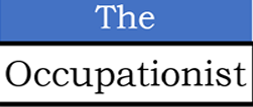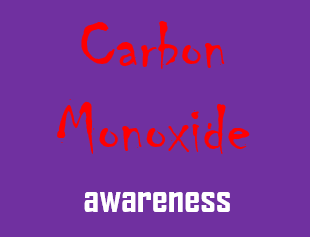Presence of carbon monoxide (CM) can cause irritating symptoms and even death depending on its concentration in the ambient air. CM is present not just in factories and offices but in homes too.
Basement car parking spaces are also a source where carbon monoxide (CM) levels can develop to annoying if not fatal levels.
As per CDC (Centers for Disease Control and Prevention), each year more than 400 people in America die from unintentional CM poisoning. CM poisoning leads to approximately 50,000 visits to the Casualty (Emergency Room) and around 4000 hospitalizations. In UK around 4000 people make a visit to the Casualty for unintentional CM poisoning.
CM poisoning is associated with health effects. At low concentrations, CM causes fatigue in healthy people and chest pain in those with heart diseases. At moderate concentrations it causes impaired vision, angina and reduced brain function. At high concentrations, it is known to cause dizziness, headache, confusion, nausea, flu-like symptoms that clears up after leaving the place and fatality (at very high concentration).
The best way of preventing carbon monoxide (CM) from entering the office is by ensuring a visit by a professional engineer to service the heating appliances annually.
To measure CM levels, devices are available. The current OSHA PEL (Occupational Safety and Health Administration Permissible Exposure Limit) for CM is 50 ppm as an 8-hour time weighted average.
Average CM levels in homes without gas stoves vary from 0.5 to 5 parts per million (ppm); near properly adjusted gas stoves are between 5 to 15 ppm and near poorly adjusted stoves are 30 ppm or higher. Many people in colder areas of developing countries are found dead as they inhale CM when they burn coal overnight to keep themselves warm in their poorly ventilated houses.
In offices, the source of CM is heating of office space during winter months. If the heating appliance using fossil fuels or wood are badly maintained or installed, they may not burn the fuel efficiently or vent correctly resulting in production of CM.
The best way of preventing CM from entering the office is by ensuring a visit by a professional engineer to service the heating appliances annually. They will check their condition, and advise on any repairs necessary for its proper functioning.
Source of carbon monoxide (CM) in homes is either a firepot or an electric room heater.
In factories, CM pollution results from incomplete burning of material containing carbon such as kerosene, coal, wood, natural gas, petrol, diesel etc. Forges, blast furnaces and coke ovens produce CM but the most common source of exposure is the internal combustion engine.
Basement car parking spaces are also a source where CM levels can develop to annoying if not fatal levels. Hence it is good to instal CM sensors, exhaust fans and advise chauffeurs and other car owners to refrain from keeping the engine running or waiting in the basement for long hours.
A CM sensor can be programmed to alert if the level of CM exceeds the permitted level of ppm. If the sensors detect that the level of CM has exceeded the permitted levels, exhaust fans are switched on. The air contaminated with CM is removed from the area and brings fresh air. A Variable Frequency Drive (VFD) controls the speed of the exhaust fans based on the ppm level.
In 2017, a study from AIIMS, New Delhi involving 40 cases of fatal CM poisoning it was found that 80% of cases were reported in winter months. 39 of them died with a source of CM nearby and the person was inside the room or some closed space without ventilation. In most cases, the source of CM was either a firepot or an electric room heater. Some cases of CM build inside the car with a running engine.
Occupations affected by CM poisoning include custom inspector, Diesel engine operator, firefighter, forklift operator, garage mechanic, police officer, taxi driver, toll booth attendant, welder, marine terminal worker etc.
Steps to reduce exposure to CM that individuals and business owners must understand include:
- Educate workers how to identify presence of CM and about the risks of exposure
- Provide personal CM monitors having audible alarms to employees who are at risk
- Gas appliances should be properly adjusted
- Having a vented heater helps
- In kerosene heaters use proper fuel
- On the exhaust fans while using gas stoves
- Open the flue (a pipe) of a fireplace is in use
- Use electricity or battery powered equipment instead of gasoline-powered machines
- Get inspected annually by a professional all central-heating systems (furnaces, flues, chimneys etc.) and repair any leaks without delay
- Do not keep the car engine ON in a garage, basement car parks or in a poorly ventilated place
- Install battery-operated detectors that measure accumulation of CM over time and have audible alarms. When the CM levels get too high, the detector sounds an alarm, allowing workers to evacuate or ventilate the area
- Test the air on a regular basis in areas where CM is expected to be present
As a temporary measure, additional ventilation can be used for short periods of time when high levels of CM are anticipated.
Report for immediate action by workers working with heating equipment if they notice:
- Gas flames that burn orange or yellow instead of blue
- Soot marks on or above the field-fired appliance
- Coal or wood fires that do not stay lit
- Increased condensation inside the windows
- Fire that is difficult to ignite
- Boiler making a banging or clanking noise
- The pilot light on the boiler keeps going out
- The chimney or flue is blocked
- A musty smell
CM is colorless and odorless and hence is difficult to detect.
First Aid: If it appears that a worker has been exposed to high levels of CM, the following steps taken immediately can save a life:
- Move the worker outdoors to a place where there is fresh air
- Call Ambulance
- If the worker is breathing, first-aiders should administer 100 percent oxygen
- If the worker is not breathing, first-aiders should administer CPR (Cardio Pulmonary Resuscitation)
The role of Occupational Health (OH) Physician is to create awareness about CM poisoning in business operations and along with Industrial Hygienist make sure that steps are taken to monitor CM levels and CM alarms are installed at appropriate places. The OH physician should develop a robust training program for employees to identify CM poisoning and provide first-aiders (trained in CPR, oxygen administration etc.) as necessary. Provision of an ACLS ambulance and a tie-up with a tertiary care hospital having hyperbaric chamber will help persons with severe CM poisoning. Severe CM poisoning requires placing the person in a high-pressure (hyperbaric) chamber and breathe 100% oxygen.
To know more, contact
____________________________________________________________________________________________
Dr Ajay Sati is an Occupational Health physician who prefers to describe himself as an Occupationist, to denote, ‘an expert in diseases and other concerns of occupations’. Dr Sati has managed health and wellness programs in industries he worked, like the atomic energy, and energy (oil & gas) in India and overseas. An experienced virtual consultation expert he was involved in many greenfield and brownfield projects providing inputs from health point of view. He is currently involved in a health startup.



